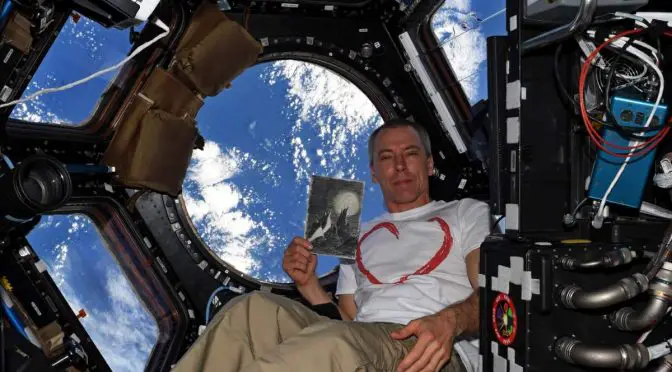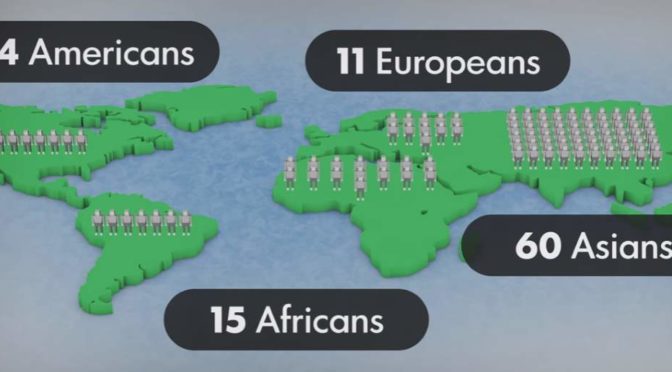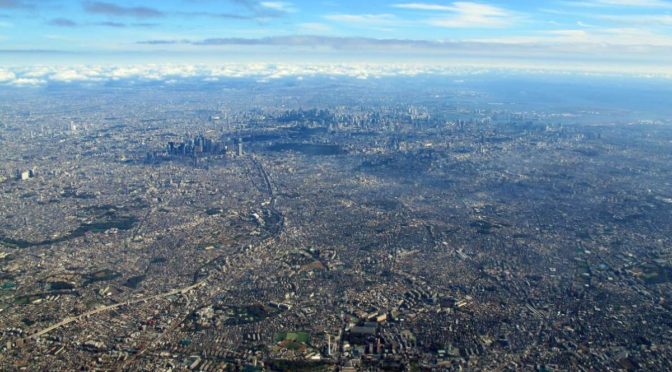NASA Astronaut Andrew Jay “Drew” Feustel, who is currently living and working aboard the International Space Station, published a photo on his Twitter account with a replica of the “Moon Landscape” drawing by Holocaust victim Petr Ginz to honor Holocaust Remembrance Day (Yom HaShoah). The replica of the painting was first flown in space by Ilan Ramon (June 20, 1954 – February 1, 2003), the first Israeli astronaut for NASA. Ramon has died in the re-entry accident of STS-107, the fatal mission of the Space Shuttle Columbia. Ilan Ramon’s mother and grandmother were Auschwitz survivors, and his grandfather and other family members perished in Nazi death camps.
Feustel took with him to space a copy of a special drawing entitled “Moon Landscape”, which was created by a Jewish Czech boy named Petr Ginz (1 February 1928 – 28 September 1944) while incarcerated in Terezin, Czechoslovakia, during World War II. The drawing depicts how Earth would look from the surface of the moon. Petr was fascinated by science fiction and inspired by his favorite author, the French novelist, poet, and playwright Jules Verne (8 February 1828 – 24 March 1905), to draw and write stories about a far-off world he would never visit. At the age of 16, Petr lost his life at Auschwitz.






